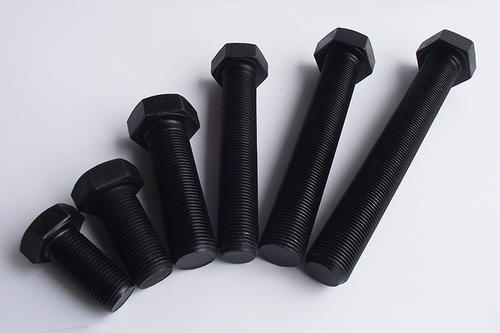Bolts that are made of high-strength steel or require a larger pre-tightening force can be called heavy hex bolts. High-strength bolts are mostly used for the connection of bridges, steel rails, high pressure and ultra-high pressure equipment. The fracture of this kind of bolt is mostly brittle fracture. High-strength bolts applied to ultra-high pressure equipment need to be prestressed in order to ensure the sealing of the container.
The high-strength bolt connection is to clamp the plate of the connecting plate through the large tightening pre-pressure in the bolt rod, which is sufficient to generate a large friction force, thereby improving the integrity and rigidity of the connection.
When subjected to shear force, according to the design and The different force requirements can be divided into two types: high-strength bolt friction type connection and high-strength bolt pressure-bearing type connection. The essential difference between the two is that the limit state is different. Although they are the same type of bolts, they are calculated in terms of calculation methods, requirements, and scope of application. All are very different.
In order to improve the coefficient of friction and avoid corrosion, seizure or jamming during use, the technical requirements stipulate that the surface should be treated with nickel-phosphorus plating. The thickness of the coating is guaranteed to be within the range of 0.02~0.03mm, and the coating is uniform, dense and without pinholes.
Process factors that affect the quality of heavy hex bolts include steel design, spheroidizing annealing, shelling and dephosphorization, drawing, cold heading, thread processing, heat treatment, etc. Sometimes it is the superposition of various factors.




